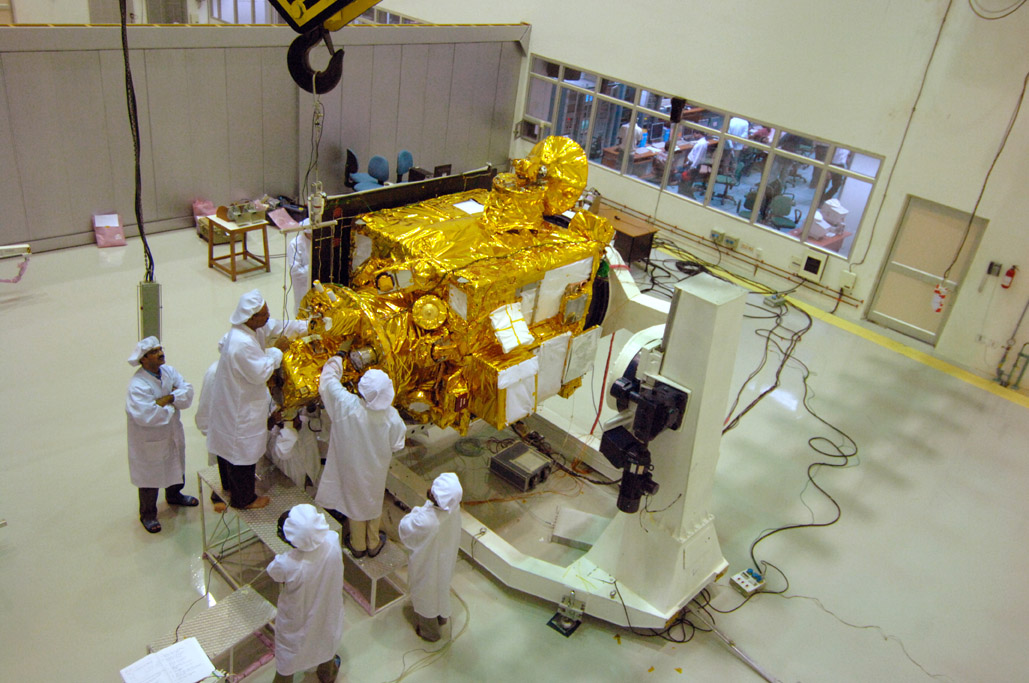SEPTEMBER 21, 2012: Two amateur astronomers, Vitali Nevski of Belarus and Artyom Novichonok of Russia, discover Comet ISON C/2012 S1 with a telescope of the International Scientific Optical Network located at Kislovodsk, Russia. Comet ISON was expected to become a brilliant object when near the sun and Earth in late 2013 but instead disintegrated as it passed through perihelion. It is a future “Comet of the Week.”
SEPTEMBER 21, 2018: The MINERVA-II probe, carried with JAXA’s Hayabusa2 mission, successfully lands on the surface of the near-Earth asteroid (162173) Ryugu and deploys small rovers; these become the first rovers to move on the surface of an asteroid. The Hayabusa2 mission is discussed in a future “Special Topics” presentation.
SEPTEMBER 22, 1999: The Apollo-type asteroid now known as (101955) Bennu passes 0.015 AU from Earth, eleven days after its discovery by the LINEAR program in New Mexico. Bennu is the destination of NASA’s currently-ongoing OSIRIS-REx mission, which is discussed in a future “Special Topics” presentation.
SEPTEMBER 22, 2001: NASA’s technology testbed Deep Space 1 mission flies by Comet 19P/Borrelly. The returned images show the comet’s nucleus as a bowling pin-shaped object roughly 8 km long. Deep Space 1 is discussed in a previous “Special Topics” presentation.
SEPTEMBER 22, 2001: A team of astronomers led by William Merline discovers a binary moon companion – since named Menoetius – of the large “Jupiter Trojan” asteroid (617) Patroclus with the 8.1-meter Gemini North Telescope at Mauna Kea Observatory in Hawaii. Patroclus and Menoetius are scheduled to be visited by NASA’s Lucy mission in 2033. The Lucy mission is discussed in a previous “Special Topics” presentation, and Trojan asteroids are the subject of a future “Special Topics” presentation.
SEPTEMBER 22, 2080: The Apollo-type asteroid (101955) Bennu will pass 0.016 AU from Earth. Bennu is the destination of NASA’s currently-ongoing OSIRIS-REx mission.
SEPTEMBER 23, 585: Astronomers serving in the court of the Sui dynasty in China make the first records of seeing the Orionid meteor shower, reporting “hundreds of meteors scattered in all directions.” The Orionids, which peak on October 21 this year, are associated with Comet 1P/Halley.
SEPTEMBER 23, 2060: The Apollo-type asteroid (101955) Bennu will pass only 0.005 AU – just under 2.0 lunar distances – from Earth, the closest approach it will make during the 21st Century. Bennu is the destination of NASA’s currently-ongoing OSIRIS-REx mission.
SEPTEMBER 24, 1975: Guido Pizarro of the European Southern Observatory in Chile takes a survey photograph with the 1.0-meter Schmidt telescope. Upon examining this photograph six weeks later ESO astronomer Richard West discovered a faint comet. Comet West 1975n became a brilliant comet when it passed through perihelion in February 1976, and I consider it to be the best comet I have ever observed. It is a previous “Comet of the Week.”
SEPTEMBER 24, 2009: The science team of NASA’s Moon Mineralogy Mapper aboard India’s Chandrayaan-1 lunar probe announces the detection of water ice in permanently shadowed craters near the moon’s poles; these results would be completely confirmed after nine years of subsequent analysis. The presence and significance of water ice on the moon is discussed in a previous “Special Topics” presentation.

SEPTEMBER 24, 2023: NASA’s OSIRIS-REx mission, which arrived at the Apollo-type asteroid (101955) Bennu at the end of 2018, and which is scheduled to collect surface material samples next month and then depart Bennu next March, is scheduled to arrive back at Earth with those samples. OSIRIS-REx is discussed in a future “Special Topics” presentation.
SEPTEMBER 26, 1992: A Japanese amateur astronomer, Tsuruhiko Kiuchi, recovers Comet 109P/Swift-Tuttle – the parent comet of the Perseid meteor shower – during its most recent return. The comet became a dim naked-eye object of 5th magnitude when it passed through perihelion late that year. It is a future “Comet of the Week.”
SEPTEMBER 26, 2020: Comet 88P/Howell passes through perihelion at a heliocentric distance of 1.353 AU. It is presently slightly brighter than 10th magnitude and thus is easily detectable with a small telescope. Updates about it and other visible comets are available at the Comet Resource Center.
More from Week 39:
Comet of the Week Special Topic Free PDF Download Glossary
Ice and Stone 2020 Home Page


